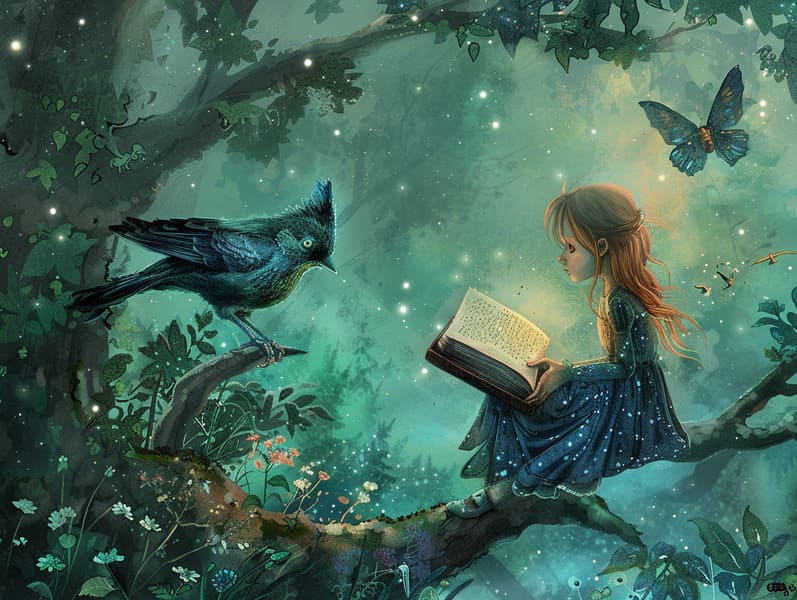The Inception of Famous Fairy Tales with Its Enduring Wonder.
The Inception of Famous Fairy Tales with Its Enduring Wonder.
Blog Article

Popular fairy tales have legendary status. These stories have been spoken from one generation to the next centuries before they were ever inscribed. They were born from a variety of traditions, including Indigenous traditions. They were initially transmitted among mature audiences, often carrying themes and messages aligned with the societal norms and beliefs of the time.
The Grimm brothers, Jacob and Wilhelm, were among the first to gather many of these beloved narratives. Their published works, "Grimm's Fairy Tales," included classics like "The Little Glass Slipper," "Hansel and Grethel," and "Snow-White and Rose-Red," which have since become classics in the world of beloved fairy tales. Similarly, H. C. Andersen's fanciful tales, such as "The Mermaid's Tale," and "The Duckling's Story," have captivated hearts worldwide, guaranteeing their place in the pantheon of famous fairy tales.
Though they are centuries old, fairy tales remain as applicable as ever, especially as nighttime stories for kids. These enchanting tales are now available in many formats, including colorful picture books, captivating animations, and digital storybooks.
Their continued relevance can be ascribed to several delightful features:
Important Morals: Classic fairy tales often offer important moral lessons. Narratives like "The Boy Who Cried Wolf" teach the virtue of truth, while "The Tortoise and the Hare" emphasize the traits of tenacity and unassuming nature. These stories offer young readers clear distinctions between good and bad, helping to shape their moral compass in a tender yet impactful way.
Kindness and Comprehension: Old fairy tales frequently present heroines facing trials and tribulations, prompting young listeners to feel with their struggles and applaud their triumphs. For instance, "The Tale of Beauty and the Beast" illustrates the virtue of appreciating inner worth to appreciate the true nature of a soul, encouraging perception and understanding.
Cultural Awareness: Many classic fairy tales are deeply ingrained in the cultural contexts from which they bloomed. Understanding these narratives can provide informative snapshots into different backgrounds, building a sense of world respect and perception.
Imagination and Creativity: The fanciful elements in old fairy tales—magical spells—boost children’s fantastical thinking. These tales bring readers to fantastical realms, kindling fantasy ideas and a sense of magic that continues a lifetime.
Traditional fairy tales are not only entrancing but also pedagogical. They act as mesmerizing tools in advancing various brain and heart skills in little ones. When traditional fairy tales are told out loud, they boost speaking abilities by offering new terms and detailed sentence structures. This practice also boosts auditory skills and attention span, as the young listen intently, enthusiastic to see what happens next.
Furthermore, exploring the themes and characters of traditional fairy tales can enhance intellectual skills and reasoning skills. Kids are shown to find patterns, make predictions, and comprehend cause and effect. These examinations also advance kids verbalize their thoughts and feelings, fostering their emotional intelligence.
In today’s digital age, the existence of digital fairy tales has made these stories more available than ever. Internet resources and online apps give broad selections of ancient fairy tales that can be seen or heard anytime, anywhere. Fairy tales recited are particularly well-liked, presenting an interactive way for little ones to engage with these captivating stories. Spoken stories and narrated videos move characters and settings to life, often joined by captivating melodies and harmonies that enrich the narrative adventure.
The enduring charm of ancient fairy tales lies in their ability to change to present days while preserving their central values. Contemporary takes of these narratives often present more varied protagonists and modern settings, check here making them meaningful to today’s audience. However, the key lessons of boldness, warmth, and righteousness remain unchanged, continuing to affect listeners of all ages.
Fairy tales also offer a sense of peace and understanding. They share a well-arranged narrative with a distinct beginning, middle, and end, often winding up with the ending of conflicts and the triumph of virtue over wickedness. This uniformity can be reassuring for young ones, yielding a sense of unchangeability in an variable world.
Traditional fairy tales continue to enchant and enlighten new generations, maintaining their splendor and importance in modern society. As bedtime stories for kids, they confer upon a perfect blend of fantasy and learning, cultivating moral values, empathy, and creativity. The proliferation of digital storybooks and the well-received status of fairy tales spoken promise that these timeless narratives remain reachable to new generations.
By perpetuating and making known these narratives, we continue to esteem the rich tapestry of cultural heritage and cultural heritage. Whether you are delving into a richly illustrated book, enjoying a electronic library, or playing an voice book, the loveliness of timeless fairy tales is always within reach. These narratives emphasize of the eternal presence of storytelling and its ability to bring us together across centuries and lands.
Even if you are seeing a richly illustrated book, viewing a web-based library, or listening to an sound book, the magic of timeless fairy tales is always within reach.
These stories remind us of the unwavering presence of fairy tales and its ability to hold us together across time and space, forming a connection that fascinates and enlightens alike.